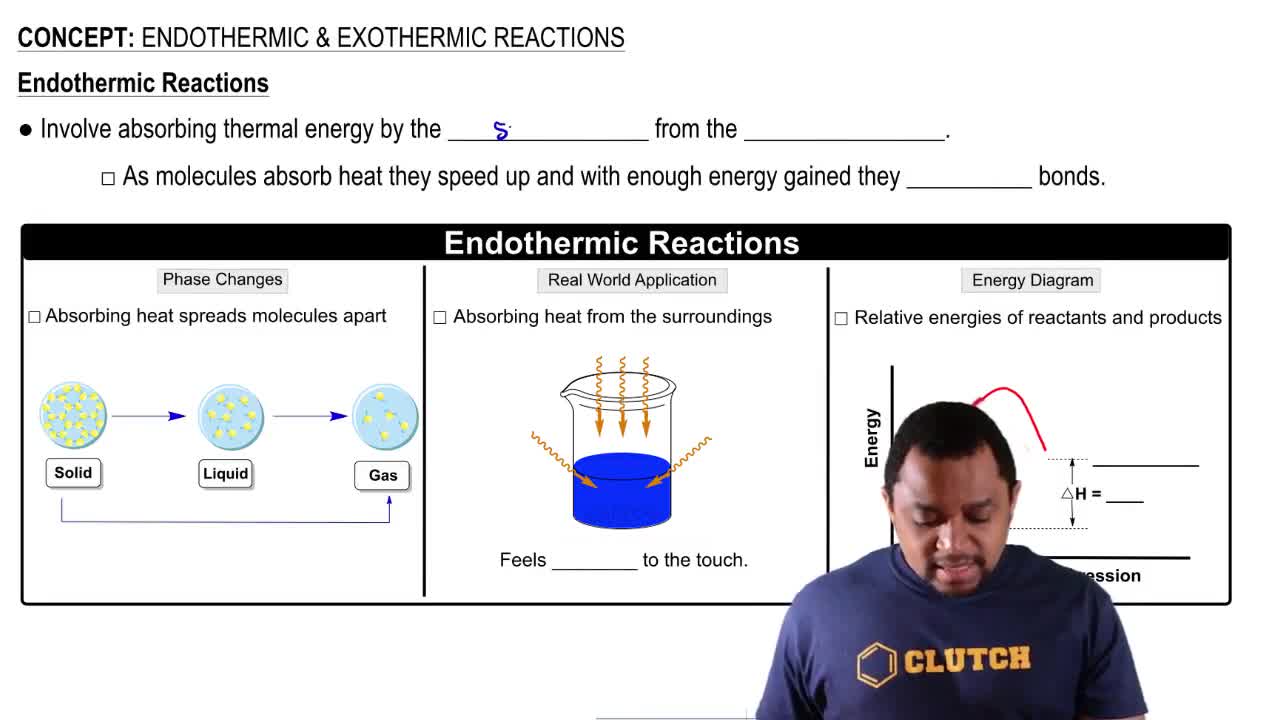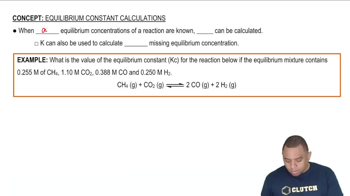Textbook Question
The following pictures represent the initial state and the equilibrium state for the reaction of A2 molecules (red) with B atoms (blue) to give AB molecules. (a) Write a balanced chemical equation for the reaction.



 Verified step by step guidance
Verified step by step guidance



The following pictures represent the initial state and the equilibrium state for the reaction of A2 molecules (red) with B atoms (blue) to give AB molecules. (a) Write a balanced chemical equation for the reaction.
The following pictures represent the initial and equilibrium states for the exothermic decomposition of gaseous A mol- ecules (red) to give gaseous B molecules (blue). (a) Write a balanced chemical equation for the reaction.